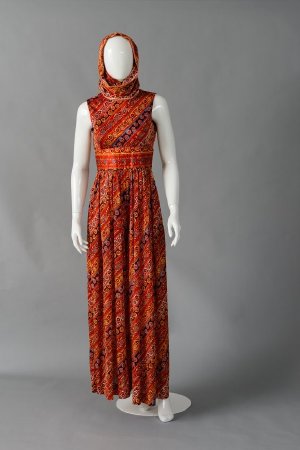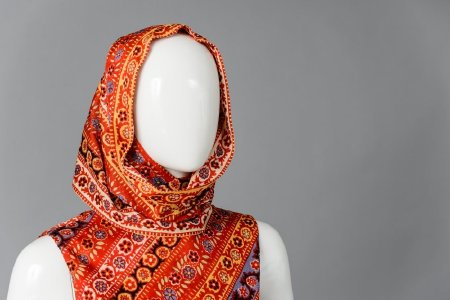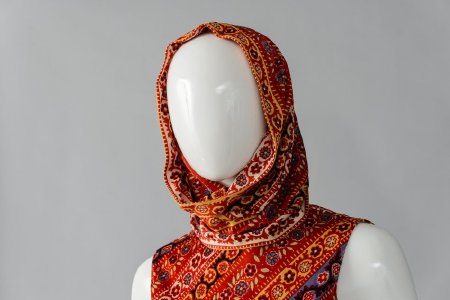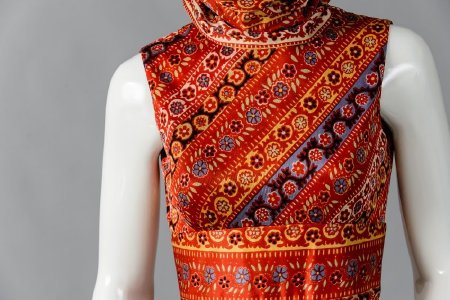Object ID:
2018.1.1-A-B
Label/Maker:
Narducci, Leo
Date:
1970s
Object Details:
Deceptively dress-like, this bright jumpsuit was designed by Leo Narducci in the 1970s. Narducci won the coveted Cody Award in 1964 and was focused on creating glamourous as well as wearable garments for real women who had active lifestyles. The jumpsuit is sleeveless with palazzo pants that billow out to floor. Red, yellow, blue, green, black, and white jumps out from the heavily patterned polyester fabric which is wash-and-wear. The wide waistband sits slightly above the natural waistline, elongating the figure. The scoop neckline is supplemented with a cowl-necked scarf that covers the head and softly frames the face.
Reference:
Cultural Connections:
In 1774, the ban on imported textiles from India was lifted in Britain, thus causing a boom regarding the importation of Indian chintz fabric.5 Although the Ackermann illustration does not show a dress made from chintz, its eclectic style is influenced by the relationship between India and England during the late 18th century. By the early 19th century, not only was chintz fabric a common material in Britain, but Eastern fashions were also interpreted by those who travelled abroad by way of the East India Trading Company. Eastern-influenced styles were fully embraced by 1816, encompassed in the craze for exoticism --- the fascination with styles and elements from far away regions.
Clothing in the 1970s was well known for its use of Bohemian, psychedelic, and Eastern European folk costume. Designer Yves Saint Laurent displayed an interest in the perceived exotic with the launch of his perfume "Opium" in 1977 which was inspired by China and coincided with his Autumn/Winter collection. 6 Just as the Ackermann illustration suggests an enchantment with the East, Narducci's jumpsuit captures a similar allure through its stylistic silhouette. These features translate swiftly into fashion during both eras resulting in the corresponding head-covering styles and the overall effect of each interpretation.
Reference:
5 Susan North, 18th-Century Fashion in Detail, London: Thames & Hudson, 2016, p.159.
6 "Opium," Musée Yves Saint Laurent Paris, accessed November 25, 2020. https://museeyslparis.com/en/biography/opium.
6 "Opium," Musée Yves Saint Laurent Paris, accessed November 25, 2020. https://museeyslparis.com/en/biography/opium.




